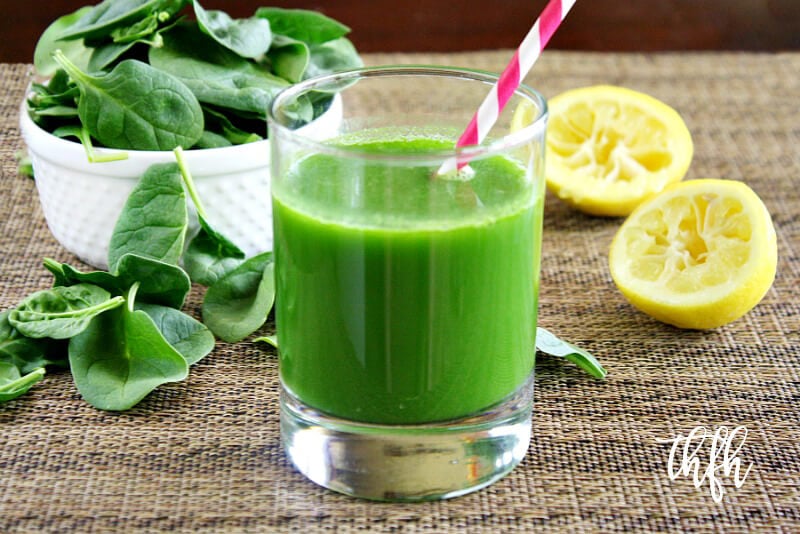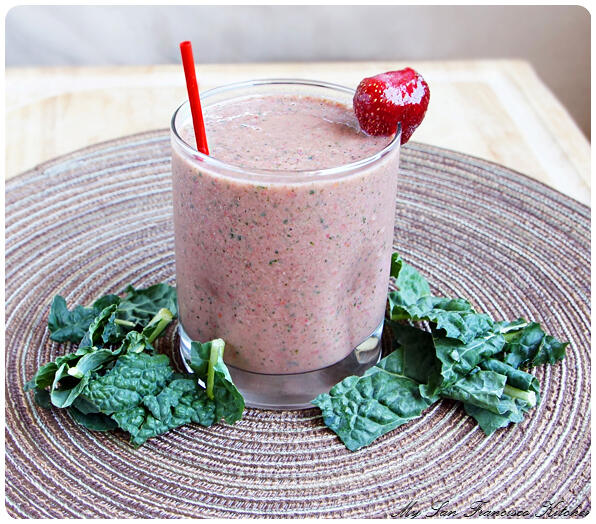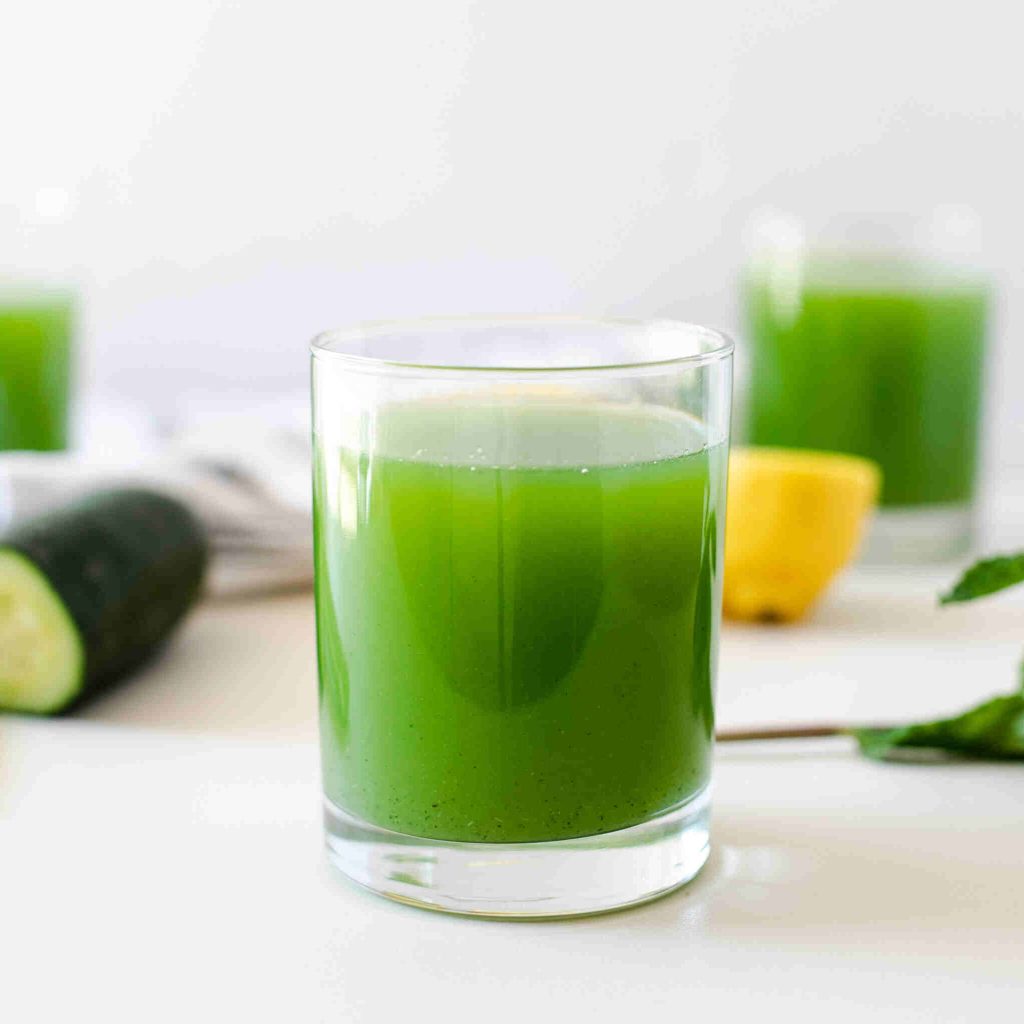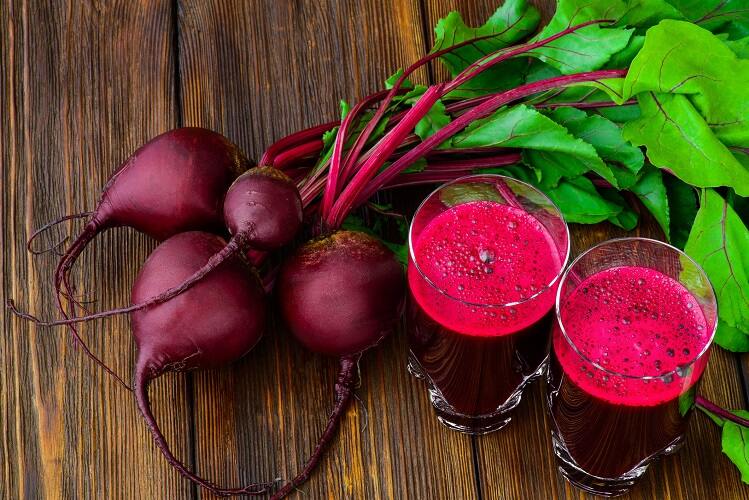Introduction:
Juice Recipe For High Blood Pressure or hypertension, is a prevalent health issue affecting millions of people worldwide. Managing high blood pressure often requires a combination of medication, lifestyle changes, and dietary adjustments. One natural and delicious way to support heart health is by incorporating juices made from fresh fruits and vegetables. These juices can be rich in essential vitamins, minerals, and antioxidants that promote healthy blood pressure levels. Here are some juice recipes that are particularly beneficial for individuals with high blood pressure.
1.Beetroot, Carrot, and Apple Juice
Ingredients:
1 medium beetroot
2 medium carrots
1 medium apple
1-inch piece of ginger (optional)
½ lemon (juiced)
1 cup of water
Method:
Peel the beetroot, carrots, and ginger.
Cut the beetroot, carrots, and apple into small pieces.
Add all ingredients to a blender, including the ginger and water.
Blend until smooth and strain the juice if desired.
Add lemon juice and mix well before serving.
Benefits:
Beetroot is known for its high nitrate content, which helps dilate blood vessels and improve blood flow, thus reducing blood pressure. Carrots are rich in potassium, which helps balance sodium levels in the body, a crucial factor in managing hypertension. Apples add natural sweetness and additional fiber to the juice.
2.Spinach and Celery Green Juice
Ingredients:
2 cups fresh spinach leaves
3 celery stalks
1 cucumber
1 green apple
½ lemon (juiced)
1 cup of water

Method:
Wash all the ingredients thoroughly.
Cut the celery, cucumber, and apple into small pieces.
Add spinach, celery, cucumber, apple, and water to the blender.
Blend until smooth and strain if desired.
Add lemon juice, stir well, and serve chilled.
Benefits:
Spinach and celery are high in potassium and magnesium, both essential minerals that help relax blood vessels and maintain healthy blood pressure levels. Cucumber adds hydration and helps flush out toxins, while the apple adds a hint of sweetness and additional fiber.
3.Pomegranate and Orange Juice
Ingredients:
1 cup pomegranate seeds
2 medium oranges
½ teaspoon honey (optional)
½ cup water
Method:
Extract the juice from the pomegranate seeds using a blender or juicer.
Squeeze the oranges to extract their juice.
Mix pomegranate juice, orange juice, and water in a glass.
Add honey if you prefer a sweeter taste.
Stir well and serve immediately.
Benefits:
Pomegranates are rich in antioxidants, particularly polyphenols, which help reduce oxidative stress and lower blood pressure. Oranges provide vitamin C and potassium, both of which support heart health and aid in lowering hypertension. This combination is not only delicious but also incredibly beneficial for maintaining healthy blood pressure.
4.Watermelon and Mint Cooler
Ingredients:
2 cups fresh watermelon chunks (seedless)
1 tablespoon fresh mint leaves
½ teaspoon lime juice
½ cup of water
Method:
Place watermelon chunks and mint leaves in a blender.
Add water and blend until smooth.
Strain the juice to remove any pulp if desired.
Add lime juice, mix well, and serve chilled.
Benefits:
Watermelon is a great source of L-citrulline, an amino acid that can help lower blood pressure by relaxing blood vessels and improving circulation. Mint adds a refreshing flavor and can help with digestion, while lime juice provides a tangy twist and additional vitamin C.
5.Berry and Kale Juice
Ingredients:
1 cup fresh strawberries
1 cup fresh blueberries
1 cup kale leaves (stems removed)
1 tablespoon chia seeds (soaked in water for 10 minutes)
½ cup of water

Method:
Wash all the fruits and kale leaves thoroughly.
Blend strawberries, blueberries, kale, chia seeds, and water until smooth.
Strain the juice if desired and serve chilled.
Benefits:
Berries are loaded with antioxidants like anthocyanins, which are known to help reduce blood pressure by dilating blood vessels. Kale is rich in potassium and magnesium, which help in regulating blood pressure. Chia seeds add a healthy dose of omega-3 fatty acids and fiber, contributing to overall heart health.
Tips for Making and Consuming Juices for High Blood Pressure
Choose Fresh and Organic Ingredients: Whenever possible, use fresh and organic produce to maximize the nutritional content and minimize exposure to pesticides and chemicals.
Avoid Added Sugars: Natural sugars from fruits are sufficient. Avoid adding extra sugar to the juices as it can raise blood sugar levels and negate the health benefits.
Drink in Moderation: While these juices are beneficial, they should be consumed as part of a balanced diet. Drinking too much juice can lead to excessive calorie intake.
Consult with a Healthcare Provider: If you have high blood pressure, consult with your doctor or a nutritionist before making any significant dietary changes.
Conclusion
Juice Recipe For High Blood Pressure Juicing can be a delicious and effective way to incorporate heart-healthy nutrients into your diet. By choosing ingredients that are rich in potassium, magnesium, antioxidants, and nitrates, you can support your body in maintaining healthy blood pressure levels. These juice recipes not only provide essential nutrients but also offer a refreshing way to stay hydrated and promote overall well-being.
How to lower blood pressure with juicing?
High blood pressure, or hypertension, is a common health condition that can lead to serious complications if left unmanaged. While medication and lifestyle changes play crucial roles in controlling blood pressure, incorporating fresh juices into your diet can offer additional support. Juicing provides a convenient way to consume a concentrated dose of vitamins, minerals, and antioxidants that can help promote heart health and lower blood pressure. Here’s how you can effectively use juicing to help manage your blood pressure.
Understanding the Connection Between Juicing and Blood Pressure
Juicing involves extracting the liquid from fruits and vegetables, leaving behind the pulp. This process concentrates the nutrients and can provide a powerful boost to your diet. Certain nutrients found in fruits and vegetables are known to have beneficial effects on blood pressure:
Potassium helps balance sodium levels in the body and aids in maintaining healthy blood vessel function.
Magnesium supports the relaxation of blood vessels and helps regulate blood pressure.
Antioxidants neutralize free radicals and reduce oxidative stress, which can help prevent damage to blood vessels.
Nitrates found in vegetables like beets can help dilate blood vessels, improving blood flow and lowering blood pressure.
Top Juice Ingredients for Lowering Blood Pressure
Beetroot
Beetroot is renowned for its high nitrate content, which helps relax and dilate blood vessels, improving blood flow and reducing blood pressure. Nitrates are converted to nitric oxide in the body, which has a vasodilating effect.
Carrots
Carrots are rich in potassium, which helps counteract the effects of sodium and supports healthy blood pressure levels. They also provide beta-carotene, an antioxidant that helps protect blood vessels.
Celery
Celery contains compounds called phthalides that can help relax the muscles in blood vessel walls, improving blood flow and potentially lowering blood pressure.
Spinach
Spinach is loaded with potassium and magnesium, both essential for maintaining healthy blood pressure levels. It also contains nitrates that contribute to vasodilation.
Cucumbers
Cucumbers are hydrating and rich in potassium, making them excellent for maintaining proper fluid balance and supporting heart health.
Berries
Berries such as strawberries, blueberries, and raspberries are high in antioxidants, particularly anthocyanins, which can help reduce inflammation and support healthy blood vessels.
Juice Recipes for Lowering Blood Pressure
1.Beetroot and Carrot Juice
Ingredients:
1 medium beetroot
2 medium carrots
1 apple (for sweetness)
1-inch piece of ginger (optional)
Method:
Peel and chop the beetroot and carrots.
Juice all ingredients together.
Serve immediately for the best taste and nutrient retention.
Benefits:
The nitrates in beetroot and potassium in carrots work together to support healthy blood pressure levels and improve circulation.
2.Celery and Cucumber Juice
Ingredients:
3 celery stalks
1 cucumber
1 green apple
Juice of ½ lemon

Method:
Chop the celery, cucumber, and apple.
Juice the ingredients together and add lemon juice.
Stir well and enjoy.
Benefits:
Celery’s phthalides and cucumber’s hydrating properties contribute to relaxed blood vessels and balanced blood pressure.
3.Spinach and Berry Smoothie
Ingredients:
1 cup fresh spinach
1 cup mixed berries (strawberries, blueberries, raspberries)
1 banana
1 cup water or coconut water
Method:
Blend all ingredients until smooth.
Strain if desired, and serve chilled.
Benefits:
The potassium and magnesium in spinach, combined with the antioxidants from berries, support heart health and blood pressure regulation.
Tips for Using Juicing to Lower Blood Pressure
Use Fresh Ingredients: Fresh, organic produce is best for maximizing nutrient content and avoiding pesticides.
Watch Portion Sizes: While juicing can be beneficial, it’s important to consume juices in moderation. Too much juice can lead to excessive calorie intake and reduce the fiber intake from whole fruits and vegetables.
Balance Your Diet: Juices should complement a balanced diet that includes whole fruits, vegetables, lean proteins, and whole grains.
Consult with a Healthcare Provider: Always consult with your healthcare provider before making significant changes to your diet, especially if you have high blood pressure or other health conditions.
Conclusion
Juicing can be a delicious and effective way to support your efforts in lowering blood pressure. By incorporating juices made from nutrient-rich fruits and vegetables into your diet, you can provide your body with essential vitamins, minerals, and antioxidants that contribute to heart health. Remember, juicing is most beneficial when used as part of a comprehensive approach to managing blood pressure, including a healthy diet, regular exercise, and any prescribed medications. Embrace the power of fresh juices and take a proactive step towards a healthier heart.
Does juice fasting lower blood pressure?
Juice Recipe For High Blood Pressure has become a popular trend for detoxification and weight loss. Proponents claim that it can help cleanse the body, boost energy, and improve overall health. One of the areas of interest for many is whether juice fasting can specifically lower blood pressure. While there is anecdotal evidence and some research supporting the health benefits of juice fasting, it’s important to examine the potential effects on blood pressure and consider the overall impact on health.
What is Juice Fasting?
The goal is to replace solid foods with juices to provide a concentrated source of vitamins, minerals, and antioxidants while giving the digestive system a break. Juice fasts can vary in their strictness, with some allowing other fluids like herbal teas or broths.
How Juice Fasting May Affect Blood Pressure
1.Nutrient Intake and Blood Pressure
Juice fasting can increase the intake of specific nutrients that are known to support healthy blood pressure levels:
Potassium: Many fruits and vegetables are rich in potassium, which helps balance sodium levels and relax blood vessels. High-potassium foods like bananas, oranges, and leafy greens can aid in lowering blood pressure.
Magnesium: Found in vegetables like spinach and kale, magnesium plays a role in regulating blood pressure by helping blood vessels relax.
Antioxidants: Juices made from berries, beets, and other fruits and vegetables are high in antioxidants, which can reduce oxidative stress and inflammation, potentially benefiting blood vessel health and blood pressure.
2.Weight Loss and Blood Pressure
Juice fasting often leads to weight loss due to a reduction in calorie intake. Weight loss can contribute to lower blood pressure, especially in individuals who are overweight or obese. By reducing body fat, blood vessels may become less strained, leading to improved blood pressure levels.
3.Reduced Sodium Intake
A juice fast typically involves eliminating processed and high-sodium foods, which can contribute to hypertension. By cutting out these foods, individuals may experience a temporary reduction in blood pressure.
Potential Risks and Considerations
1.Nutritional Imbalance
While juice fasting can increase certain nutrient levels, it may also lead to deficiencies in essential nutrients such as protein, healthy fats, and fiber. A lack of these nutrients can negatively impact overall health and may not be ideal for long-term blood pressure management.
2.Short-Term Effects
The effects of juice fasting on blood pressure are often short-term. While individuals might experience a temporary drop in blood pressure during a fast, these effects may not be sustained once normal eating habits are resumed.
3.Blood Sugar Levels
Juices, particularly fruit juices, can be high in natural sugars. Consuming large quantities of juice may lead to spikes in blood sugar levels, which can have implications for individuals with diabetes or those at risk of developing diabetes, potentially impacting blood pressure indirectly.
4.Potential Side Effects
Juice fasting can lead to dehydration, fatigue, dizziness, and headaches, especially if not managed properly. These side effects may affect overall well-being and blood pressure stability.
Scientific Evidence and Studies
While there is some evidence suggesting that juice consumption can benefit heart health, specific studies on juice fasting and blood pressure are limited. Most research focuses on the effects of individual juices or specific nutrients rather than fasting as a whole. For example:
A study published in Hypertension found that beetroot juice, high in nitrates, can lower blood pressure. However, this study was on beetroot juice alone rather than a comprehensive juice fast.
Research in the American Journal of Clinical Nutrition highlighted that diets rich in fruits and vegetables, which can be a part of juice fasting, are associated with lower blood pressure.
Conclusion
Juice Recipe For High Blood Pressure Juice fasting may offer some benefits for blood pressure due to increased nutrient intake and temporary weight loss. However, it also carries potential risks and may not be a sustainable or balanced approach to long-term blood pressure management. For those interested in using juice fasting as a method to lower blood pressure, it’s essential to approach it with caution and consider the potential for nutritional imbalances and other side effects.
Before starting any juice fasting regimen, it’s crucial to consult with a healthcare provider or a nutritionist to ensure it aligns with your health goals and needs. A balanced diet rich in fruits, vegetables, whole grains, lean proteins, and healthy fats, combined with regular physical activity, remains a cornerstone of effective blood pressure management.
Can people with high blood pressure drink Ensure?
Ensure, a popular brand of nutritional supplements, is often used to support individuals who need additional calories and nutrients, such as those recovering from illness or managing chronic conditions. For individuals with high blood pressure, or hypertension, it’s important to consider whether Ensure is a suitable choice. Here’s a comprehensive look at whether people with high blood pressure can drink Ensure and what factors they should consider.
What is Ensure?
Ensure is a brand of nutritional supplements that includes a range of products such as shakes, powders, and drinks. These products are designed to provide essential nutrients, including proteins, vitamins, minerals, and calories. Ensure is commonly used for weight management, to support nutritional needs during illness or recovery, or for those with specific dietary requirements.
Key Nutritional Components of Ensure
Ensure products typically contain the following key components:
Protein: Ensure provides protein to support muscle mass and repair. It includes whey protein, soy protein, or milk protein.
Vitamins and Minerals: Ensure is fortified with vitamins and minerals like vitamin D, calcium, potassium, and magnesium, which are essential for overall health.
Carbohydrates and Fats: These are included to provide energy and help with nutrient absorption.
Considerations for People with High Blood Pressure
Sodium Content
One of the primary concerns for individuals with high blood pressure is sodium intake. Many Ensure products contain sodium, which can contribute to elevated blood pressure if consumed in large amounts. It’s essential to check the nutrition label for sodium content and choose low-sodium or sodium-free options if available.
Potassium Levels
Potassium is a crucial mineral for managing blood pressure, as it helps balance sodium levels and supports healthy blood vessel function. Ensure products often contain potassium, which can be beneficial for blood pressure management. However, if you have specific health conditions affecting potassium levels (e.g., kidney issues), you should consult your healthcare provider before consuming products with added potassium.
Added Sugars
Ensure products may contain added sugars, which can contribute to weight gain and negatively impact blood pressure and overall cardiovascular health. Excessive sugar intake can lead to obesity, which is a risk factor for hypertension. Opt for Ensure products with lower sugar content or consider using them in moderation.
Caloric and Nutrient Balance
Ensure is designed to provide a balanced nutritional profile. For people with high blood pressure, it’s important to consider how Ensure fits into their overall diet. Ensure should not replace meals but rather complement a diet that is low in sodium, rich in fruits and vegetables, and balanced with lean proteins and whole grains.
Dietary and Lifestyle Factors
For those managing high blood pressure, overall dietary and lifestyle choices play a significant role. While Ensure can be a convenient source of nutrients, it’s crucial to focus on a heart-healthy diet that includes:
Fruits and Vegetables: High in potassium and fiber, these help manage blood pressure.
Whole Grains: Provide fiber and essential nutrients.
Lean Proteins: Such as chicken, fish, and legumes.
Healthy Fats: From sources like nuts, seeds, and avocados.
Consulting with Healthcare Providers
Before incorporating Ensure or any nutritional supplement into your diet, individuals with high blood pressure should consult with their healthcare provider. They can help determine if Ensure is suitable based on individual health conditions, dietary needs, and potential interactions with medications.
Alternative Nutritional Options
For those who need additional nutrition but are concerned about the sodium or sugar content in Ensure, consider alternative options:
Homemade Smoothies: Made with fresh fruits, vegetables, and protein sources, smoothies can be customized to meet nutritional needs without excessive sodium or added sugars.
Low-Sodium or Low-Sugar Supplements: Some brands offer alternatives with lower sodium and sugar content specifically designed for individuals with hypertension.
Conclusion
Ensure can be a useful nutritional supplement for those with high blood pressure, but it’s important to be mindful of its sodium and sugar content. Monitoring these factors and choosing appropriate products can help manage blood pressure effectively. Always consult with a healthcare provider to ensure that Ensure or any other nutritional supplement aligns with your individual health needs and dietary goals. Balancing nutrient intake with a heart-healthy diet and lifestyle remains key to managing high blood pressure and supporting overall health.
Benefits of Juicing for High Blood Pressure:
High blood pressure, also known as hypertension, is a significant risk factor for cardiovascular diseases, including heart attacks and strokes. Managing blood pressure effectively often involves a combination of medication, lifestyle changes, and dietary adjustments. One natural approach gaining popularity is juicing. Incorporating freshly squeezed juices into your diet can provide numerous benefits for those with high blood pressure. Here’s how juicing can support heart health and help manage hypertension.
Nutrient-Dense Boost
1.Rich in Potassium
Many fruits and vegetables used in juicing are rich in potassium, a mineral that plays a crucial role in managing blood pressure. Potassium helps balance sodium levels in the body, which can reduce fluid retention and lower blood pressure. Juices made from ingredients like oranges, bananas, and spinach provide a concentrated source of potassium, supporting overall cardiovascular health.
2.High in Antioxidants
Juices made from berries, beets, and leafy greens are packed with antioxidants. These compounds, such as flavonoids and carotenoids, help combat oxidative stress and inflammation in the body. By reducing inflammation and protecting blood vessels from damage, antioxidants contribute to better blood pressure regulation and heart health.
3.Contains Magnesium
Magnesium is another essential mineral that supports healthy blood pressure. It helps relax blood vessels and regulate muscle function, including the heart. Juices made from magnesium-rich ingredients like kale, spinach, and avocados can provide an easy way to increase magnesium intake and support blood pressure management.
Heart Health Support
1.Improved Blood Vessel Function
Certain juices, such as those made from beets, are high in nitrates, which are converted into nitric oxide in the body. Nitric oxide helps relax and dilate blood vessels, improving blood flow and reducing blood pressure. Regular consumption of nitrate-rich juices can support healthy blood vessel function and enhance cardiovascular health.
2.Weight Management
Juicing can aid in weight management, which is crucial for controlling high blood pressure. By incorporating nutrient-dense juices into your diet, you can increase your intake of vitamins and minerals while reducing calorie consumption from less healthy foods. Weight loss can lead to lower blood pressure and reduced strain on the cardiovascular system.
Hydration and Detoxification
1.Enhanced Hydration
Many fruits and vegetables used in juicing have high water content, which helps keep the body hydrated. Proper hydration is essential for maintaining healthy blood pressure levels, as dehydration can lead to increased blood pressure. Juices like cucumber and watermelon can contribute to optimal hydration and support overall cardiovascular health.
2.Natural Detoxification
Juices can assist in the natural detoxification process by helping to flush out toxins from the body. Ingredients like lemon and ginger have detoxifying properties that can support liver function and overall health. By reducing the toxin load on the body, juicing may indirectly benefit blood pressure regulation.
Practical Tips for Juicing
1.Choose Low-Sodium Ingredients
For individuals with high blood pressure, it’s important to select low-sodium ingredients for juicing. Avoid adding salt or using processed ingredients that may contain hidden sodium. Focus on fresh, whole fruits and vegetables to ensure a heart-healthy juice.
2.Balance Your Juice Recipes
While juicing provides numerous benefits, it’s essential to balance your juice recipes with a variety of fruits and vegetables. Incorporate ingredients high in potassium, magnesium, and antioxidants to maximize the health benefits. For example, combine leafy greens with fruits like apples or berries for a nutrient-packed juice.
3.Watch Portion Sizes
Juices can be high in natural sugars, especially those made from fruits. To avoid excessive calorie and sugar intake, be mindful of portion sizes and limit the consumption of fruit-based juices. Combine fruits with vegetables to create balanced, lower-sugar juice options.
4.Use Juices as a Supplement
Juicing should complement a balanced diet rather than replace whole foods. Incorporate juices as part of a diet rich in whole fruits, vegetables, lean proteins, and whole grains. A holistic approach to diet and lifestyle, including regular physical activity, remains crucial for managing high blood pressure effectively.
Conclusion
Juice Recipe For High Blood Pressure Juicing can be a valuable addition to a heart-healthy lifestyle for individuals with high blood pressure. By providing a concentrated source of essential nutrients like potassium, magnesium, and antioxidants, juices can support blood pressure management and overall cardiovascular health. To reap the benefits of juicing, choose fresh, low-sodium ingredients, balance your juice recipes, and incorporate juices as part of a well-rounded diet. Always consult with a healthcare provider before making significant dietary changes, especially if you have high blood pressure or other health conditions. Discover delicious and easy recipes for Type 2 diabetics that balance low carbs, healthy fats, and fiber for better blood sugar control. Start your day with easy breakfast recipes featuring bread—try avocado toast, egg sandwiches, or French toast with berries.
As an Amazon Associate, We earn from qualifying purchases. When you purchase a product through Amazon links on kitchenadvising.com, we may earn a small commission at no extra cost to you. This helps support the site and keep our content free.


